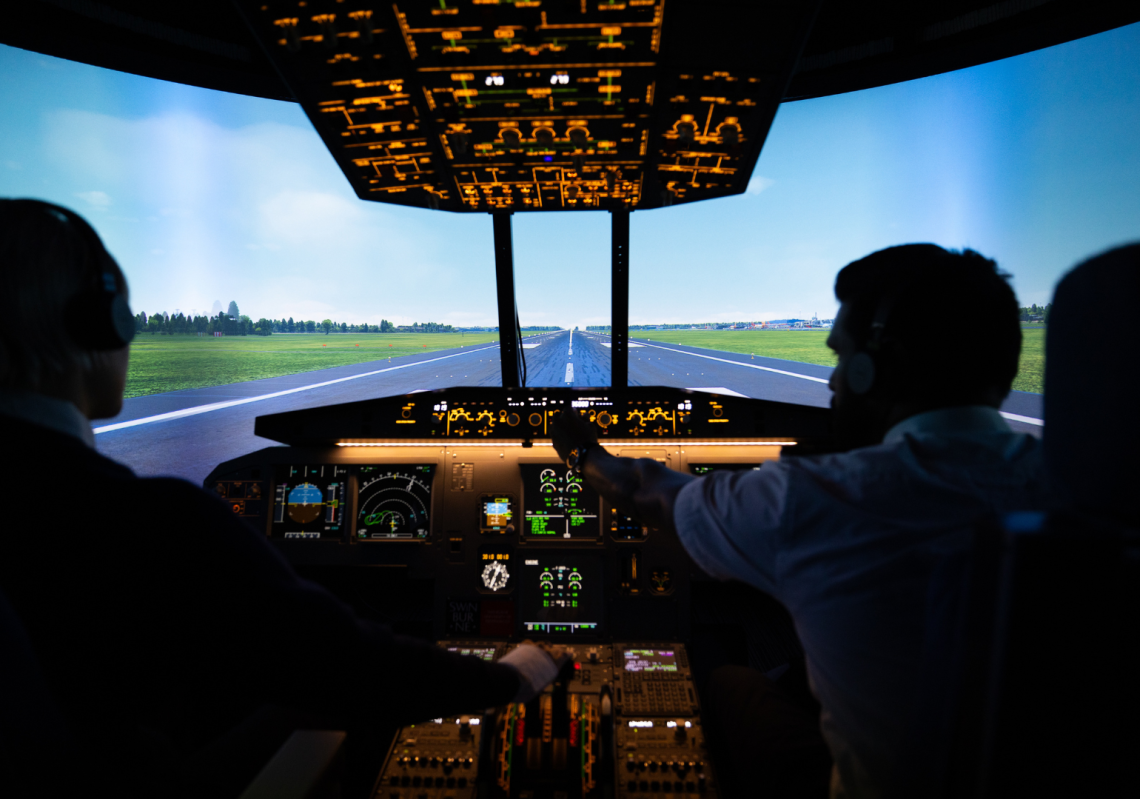Learning to safely pilot an aircraft is about more than just take-off and landing. When it comes to flying large airliners such as the Airbus A320, a pilot needs to work with a multidisciplinary team of systems and mechanical engineers and crew to operate it effectively.
Inside a darkened room on a suburban Melbourne street lives Australia’s first fully integrated simulated airline operations control centre.
The aim of this facility, located at Swinburne University of Technology’s Hawthorn campus, is to give students the experience of working in an immersive environment and ensure that graduating pilots and aviation management students are industry-ready.
“About six years ago we went around a lot of companies in Australia and asked, ‘Where’s the gap between the skills students are taking out and skills that you require them to have on the ground when they come in?’” said Matt Ebbatson, formerly of the Department of Aviation at Swinburne.
“From a flying perspective, obviously, most of that is captured. But from a management perspective the feedback was that [graduates] struggle to communicate under time pressure and under uncertainty, [or] make decisions [when] situations are fuzzy and complex.”
Pressure cooker environment
The team behind Swinburne’s aviation program decided to address this. In November 2022, they took delivery of a brand-new flight simulator modelled on the workhorse of the short- to mid-haul Australian carriers: the Airbus A320.
Using multi-screen technology and a faithfully replicated cockpit setup, it is the only one of its kind operating in an Australian university.
Earlier this year, Swinburne integrated it with an operations centre designed to mirror the Jetstar operations centre and provide that full, multi-disciplinary learning experience. It’s designed to give aviation students a breadth of experience, covering routine flights to complex emergency situations.
“This provides the real-world, pressure-cooker experience that pilots are likely to experience on an average workday,” Ebbatson said. “This is now part of the work integrated learning in the aviation program.
“Students will come in here, learn about the practice of aviation … experience real-world time pressures and uncertainty, and learn to communicate so they’re prepared to walk into a professional operation.”
Not just for pilots
At a university, a facility such as this has many applications beyond its primary purpose. It gives students of other disciplines the opportunity to see what it’s like to work in a multidisciplinary environment too.
“We have management or engineering students come in and build models or performance criteria, and test them [to] see if they crash into a mountain if they’ve got it wrong,” said Ebbatson.
The level of fidelity also allows Swinburne students to see first-hand how aircraft operate and respond in various situations, encouraging them to iterate and problem-solve.
Live performance engineering
This is the first time in Australia that a flight simulator has been integrated with a simulated airline operations control centre for classroom teaching. The simulated operations control centre allows students to monitor aircraft and pilot performance in real time.
“This is going to be used in the classroom context with 20 students at any one time,”Ebbatson explained.
“While Aviation Training Devices (ATDs) such as procedural trainers and flight simulators have been used extensively for flight training, they haven’t been integrated within a broader simulated airline operations ecosystem. There are cameras in here streaming what’s going on straight out into the classroom. So we can do live-performance engineering work with the stream of data from the aircraft.”
NOVA simulator
The University of Sydney has also recently entered the educational flight simulator arms race with the installation of a new Eight360 NOVA Simulator.
More focused on engineering than flight training, the NOVA simulator has unlimited rotational axes allowing complex movements such as spinning and inverted flight, allowing researchers to gain a practical understanding of how aircraft and humans behave and perform in difficult conditions.
Rather than focusing on a single platform, it uses a virtual reality environment to mimic multiple flight operations environments.



